Decoding Aluminum Electrolytic Capacitors: A Comprehensive Guide
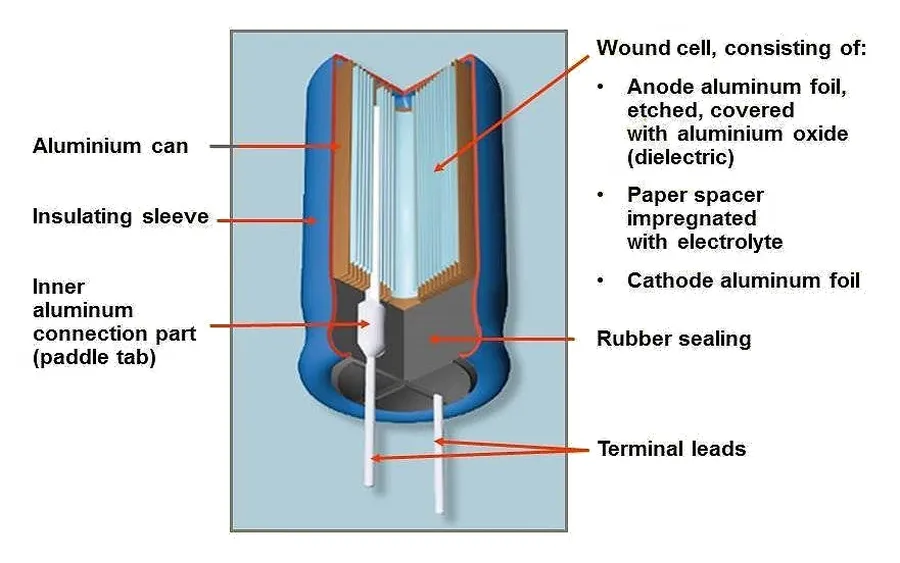
In our daily lives, from smartphones to power grids, electronic components are the unsung heroes. Among these, the aluminum electrolytic capacitor plays a pivotal role, efficiently storing and releasing electrical energy. This article will demystify this ubiquitous component, exploring its intricate workings, practical uses, and the nuances that make it essential in modern electronic designs.
The Core Structure of Aluminum Electrolytic Capacitors

Aluminum electrolytic capacitors are composed of four key elements: the aluminum anode, the cathode, an electrolyte, and the aluminum oxide dielectric layer. The anode, typically a high-purity aluminum foil, is electrochemically etched to increase its surface area. The aluminum oxide dielectric layer, a thin insulating film, forms on the anode's surface, and this layer's thickness determines the capacitor's voltage rating. The cathode can either be a conductive electrolyte or a second aluminum foil in non-solid electrolytic capacitors. These components work in concert to store electrical charge by accumulating ions at the anode and cathode.
- Anode
Made of aluminum foil, electrochemically etched to maximize surface area for charge accumulation. - Cathode
Can be a conductive electrolyte or another aluminum foil, depending on capacitor type, facilitating charge flow. - Electrolyte
A conductive substance that enables ion transport between the anode and cathode. Can be liquid, gel or solid depending on the capacitor type. - Dielectric Layer
A thin layer of aluminum oxide (Al₂O₃) formed on the anode, acting as the insulator that stores the electrical charge.
| Component | Material | Function |
|---|---|---|
| Anode | Aluminum Foil | Provides large surface area for charge storage |
| Electrolyte | Conductive Liquid, Gel or Solid | Facilitates ion movement between the electrodes |
| Cathode | Conductive Electrolyte or Aluminum Foil | Acts as a second electrode for charge accumulation |
| Dielectric Layer | Aluminum Oxide (Al₂O₃) | Acts as an insulator and dictates voltage rating |
Polarity and its Importance in Aluminum Electrolytic Capacitors
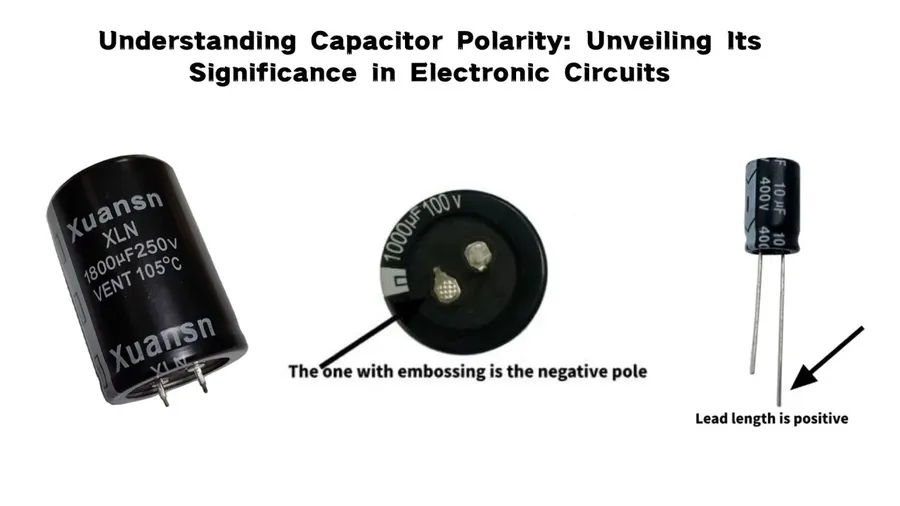
Aluminum electrolytic capacitors are inherently polarized components, meaning they have a designated positive and negative terminal, unlike some other capacitor types. This polarity is a critical characteristic stemming from their construction and is essential for their proper functioning and longevity. Understanding and adhering to this polarity during circuit integration is paramount to prevent damage and ensure optimal performance.
The polarization arises from the electrochemical formation of the aluminum oxide dielectric layer. This layer, crucial for the capacitor's operation, is formed through an electrochemical process, and reversing the voltage applied to the capacitor can disrupt this oxide layer, leading to its degradation and potential failure. The electrolyte also plays a role, it is conductive liquid or gel, which is essential to the electrolytic capacitor function, but can generate gas when reverse biased, which can cause the capacitor to bulge or explode.
Consequences of incorrect polarity connection in aluminum electrolytic capacitors can be severe. Applying a reverse voltage can cause a cascade of negative effects, these include:
- Electrolyte Degradation
Reverse polarization can lead to the chemical decomposition of the electrolyte. This reaction can generate gas, causing internal pressure build-up within the capacitor. - Dielectric Layer Breakdown
The aluminum oxide dielectric layer, which provides the capacitor's insulating properties, can be damaged or destroyed. This breakdown leads to an increase in leakage current, a decrease in capacitance, and in severe cases, a short circuit. - Overheating
The internal chemical reactions can cause the capacitor to overheat, which further accelerates the degradation process. - Potential Rupture or Explosion
The combination of internal pressure from gas buildup and the weakening of the capacitor’s structure can lead to a rupture or, in extreme cases, an explosion. This not only damages the capacitor but can also pose a safety hazard.
To avoid these issues, several precautions must be taken during capacitor integration:
- Identifying Polarity
The capacitor's casing will be marked with polarity indicators. The negative terminal is often indicated with a stripe on the capacitor body. Always refer to the manufacturer's datasheet for exact markings. - Proper Circuit Design
Ensure the capacitor is connected correctly within the circuit. The positive terminal must be connected to the more positive side of the circuit, and the negative to the more negative side. - Double-Check Connections
Before applying power to the circuit, double-check all connections to ensure proper polarity alignment. Use a multimeter to verify polarities if necessary. - Use of Protective Diodes
In certain applications, a diode can be added in series with the capacitor to provide reverse polarity protection.
Key Characteristics and Parameters of Aluminum Electrolytic Capacitors
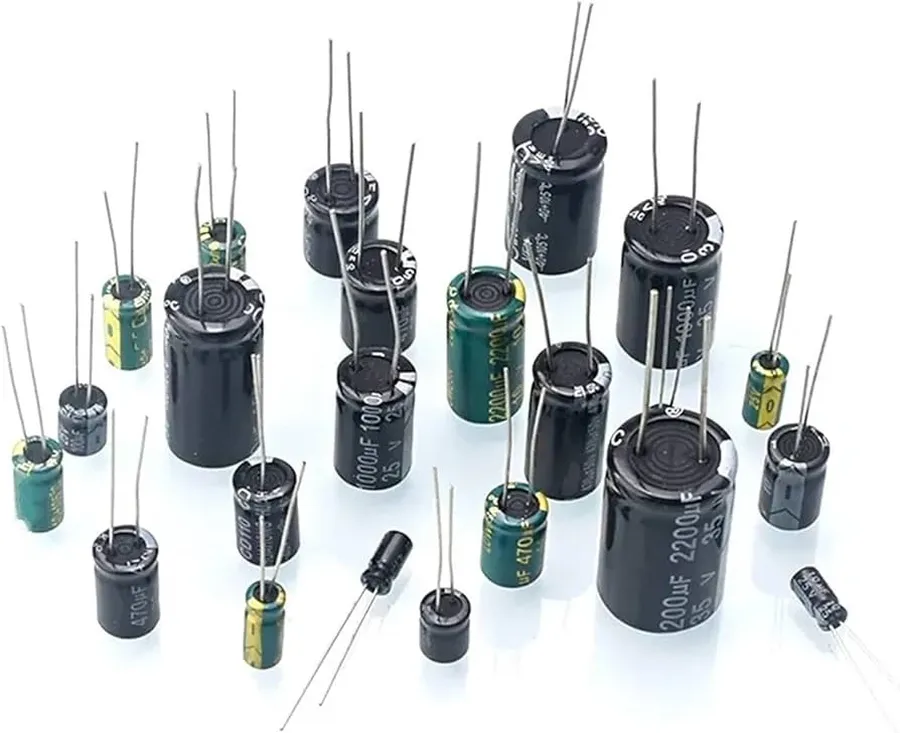
The performance and suitability of an aluminum electrolytic capacitor for a given application are largely dictated by its key electrical parameters. These parameters include capacitance, voltage rating, Equivalent Series Resistance (ESR), and ripple current, each playing a crucial role in the capacitor's function and longevity. Understanding these parameters is vital for effective capacitor selection and circuit design.
| Parameter | Description | Impact on Performance | Unit |
|---|---|---|---|
| Capacitance (C) | The ability to store an electrical charge. | Determines the amount of energy stored. Higher capacitance allows for more energy storage and better filtering capabilities. | Farads (F) |
| Voltage Rating (V) | The maximum voltage that can be safely applied across the capacitor without the risk of dielectric breakdown or damage. | Exceeding the voltage rating can lead to capacitor failure or reduced lifespan. Proper voltage rating is critical for circuit reliability. | Volts (V) |
| Equivalent Series Resistance (ESR) | The total internal resistance of the capacitor, including the resistance of the leads, electrodes, and electrolyte. | Contributes to heat generation within the capacitor during operation. Lower ESR is preferred for higher efficiency and reduced heat dissipation. | Ohms (Ω) |
| Ripple Current (I_ripple) | The alternating current component superimposed on the DC voltage that the capacitor can handle without significant degradation. | Excessive ripple current can lead to overheating and premature failure. Proper ripple current rating is necessary for long-term reliability in AC applications | Amperes (A) |
These parameters are interconnected, and selecting a capacitor involves balancing these factors to meet specific circuit requirements. For instance, higher capacitance values are beneficial for energy storage and filtering, while lower ESR improves efficiency, and the ripple current rating ensures the capacitor can handle the demands of the application without failure. A thorough review of datasheets is critical to ensure all specifications are met.
Applications of Aluminum Electrolytic Capacitors
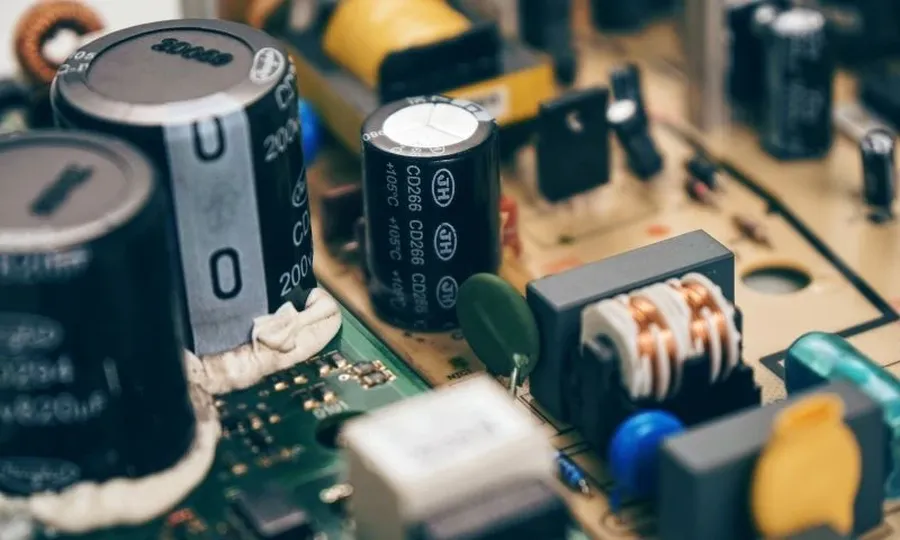
Aluminum electrolytic capacitors are ubiquitous components in modern electronics due to their high capacitance-to-volume ratio and cost-effectiveness. Their ability to store significant electrical charge in a relatively small package makes them ideal for various applications, particularly where high capacitance values are required for smoothing, filtering, and energy storage.
These capacitors are not without limitations, but their specific properties make them the preferred choice in several key sectors:
- Power Supplies:
Used extensively in smoothing circuits within AC-DC power supplies, these capacitors minimize voltage fluctuations and ensure a stable DC output. They are also crucial for energy storage in power backups and uninterruptible power supplies (UPS). The high capacitance values of aluminum electrolytics are particularly beneficial here. - Audio Equipment:
In audio amplifiers, electrolytic capacitors play an important role in signal coupling and power supply filtering. They block DC components, allowing AC audio signals to pass through. Their large capacitance allows them to filter out low-frequency noise, leading to a clearer sound output. The selection criteria here are often focused on low equivalent series resistance (ESR) to reduce signal losses. - Inverters:
Aluminum electrolytic capacitors serve as vital components in inverters. They stabilize the DC bus voltage. Inverters are used in a wide array of equipment, including solar power systems, motor drives and uninterruptible power supplies. The high capacitance and voltage capabilities of these capacitors make them suitable for handling the high energy demands of inverters. - Motor Drives:
In motor control circuits, aluminum electrolytic capacitors stabilize the power supply to the motor driver and perform filtering functions. They absorb voltage transients, protecting sensitive components, and support the efficient operation of electric motors. - Renewable Energy Systems:
They are essential for smoothing and energy storage in solar panel systems and wind turbines. Their high capacity helps store generated energy and stabilize the power flow into the grid.
Advantages and Limitations of Aluminum Electrolytic Capacitors
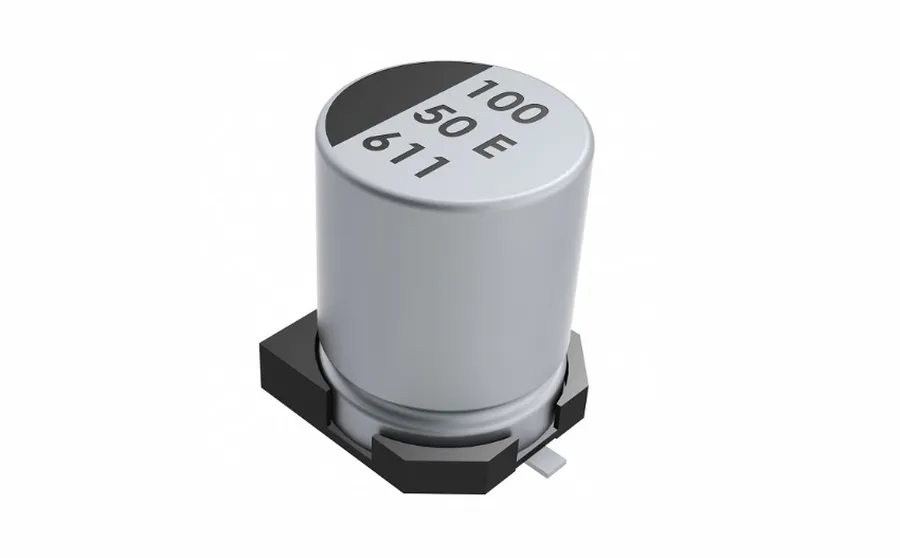
Aluminum electrolytic capacitors offer a compelling blend of high capacitance and cost-effectiveness, making them prevalent in numerous applications. However, their inherent characteristics also present certain limitations that must be considered for optimal usage. A balanced understanding of these advantages and drawbacks is crucial for informed design and component selection.
| Feature | Advantages | Limitations |
|---|---|---|
| Capacitance Density | Very high capacitance per unit volume, allowing for smaller component sizes. | Relatively larger size compared to ceramic capacitors for the same capacitance value. |
| Cost | Generally inexpensive, especially for high capacitance values. | Cost can increase for high-temperature and long-life versions. |
| ESR (Equivalent Series Resistance) | Lower ESR compared to some other electrolytic capacitor types. | Higher ESR compared to ceramic and film capacitors, leading to increased heat generation and power loss. |
| Ripple Current Handling | Good ripple current handling capability for general power applications. | Can suffer from performance degradation under high ripple current if not properly selected. |
| Polarity | Polarized nature facilitates efficient charge storage. | Strict polarity requirements; incorrect connection can lead to damage or failure. |
| Temperature Sensitivity | Function well within specified temperature ranges. | Performance degrades at extremes of temperature, with reduced capacitance and increased leakage current. |
| Lifespan | Long lifespan, particularly in well-controlled conditions and modern designs. | Electrolyte degradation over time leads to aging, dry-out and reduced lifespan, especially in harsh conditions. |
| Self-Healing | Ability to self-heal minor oxide defects via electrochemical action. | May suffer irreversible damage if subjected to excessive voltage. |
Aluminum Electrolytic vs. Other Capacitor Types
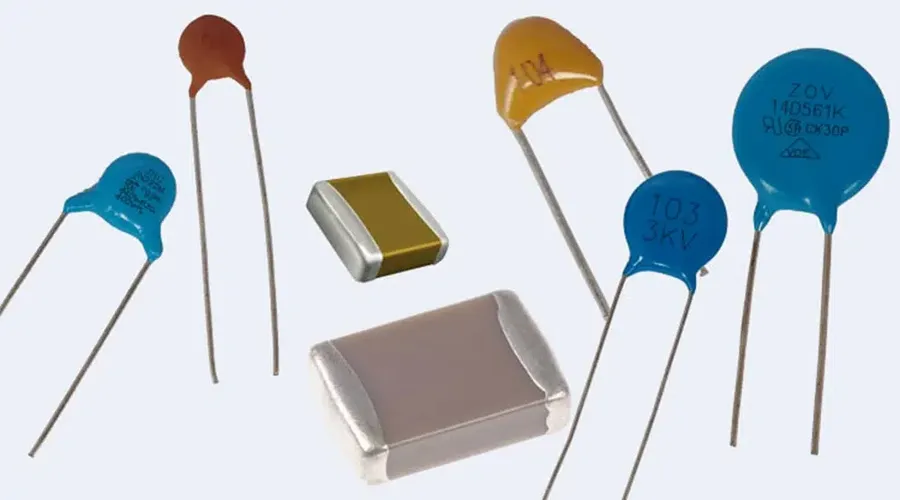
Aluminum electrolytic capacitors, while offering high capacitance, are not the sole solution for all applications. A comparative analysis with ceramic, tantalum, and film capacitors reveals their respective strengths and weaknesses, guiding engineers in selecting the optimal capacitor for specific design needs.
| Capacitor Type | Pros | Cons | Ideal Applications |
|---|---|---|---|
| Aluminum Electrolytic | High capacitance, relatively low cost, wide voltage range | Polarized, limited lifespan, temperature sensitivity, higher ESR, larger size | Power supplies, audio coupling, general purpose filtering, high energy storage |
| Ceramic | Low ESR, low ESL, non-polarized, temperature stable, small size, wide frequency range | Lower capacitance values, voltage derating issues, susceptible to piezoelectric effects, aging issue | High-frequency circuits, bypass and decoupling, precision timing, consumer electronics |
| Tantalum Electrolytic | High capacitance per volume, stable over temperature, good frequency characteristics | Polarized, sensitive to surge currents, more expensive, limited voltage range, prone to failure if overvoltaged | Portable devices, filtering, high reliability applications, where space is limited |
| Film | Low ESR, low ESL, non-polarized, high reliability, high voltage handling, high temperature stability | Larger size, higher cost, less capacitance per volume | High voltage power supplies, audio applications, precision circuits, high pulse power, filtering |
Storage and Handling Best Practices for Aluminum Electrolytic Capacitors
Proper storage and handling are crucial for maintaining the integrity and performance of aluminum electrolytic capacitors. These components are sensitive to environmental factors and physical stress, which can lead to degradation and premature failure if not handled correctly. Adhering to best practices ensures optimal functionality and longevity.
Incorrect storage conditions or improper handling can cause several detrimental effects on aluminum electrolytic capacitors, including:
- Electrolyte Dry-Out
Elevated temperatures accelerate the evaporation of the electrolyte, leading to a decrease in capacitance, an increase in ESR, and eventually, failure. - Corrosion
Exposure to high humidity can cause corrosion of the aluminum electrodes, increasing resistance and decreasing performance. - Dielectric Degradation
Prolonged exposure to extreme temperatures, both high and low, can degrade the aluminum oxide dielectric layer, affecting the capacitor's ability to hold charge. - Physical Damage
Mechanical shocks and vibrations can damage the internal structure, such as the seal, causing electrolyte leakage.
The following are recommended storage and handling guidelines:
- Temperature Control
Store capacitors in a controlled environment at a temperature between 5°C and 35°C. Avoid extreme temperatures that may accelerate electrolyte degradation. Refer to the manufacturer's datasheet for specific temperature ratings. - Humidity Control
Maintain humidity levels below 70% RH to prevent moisture-induced corrosion. Use desiccant packs in sealed containers if necessary. - Packaging
Store capacitors in their original packaging until use to prevent physical damage and contamination. Use anti-static packaging when handling sensitive components. - Handling Precautions
Avoid touching the capacitor terminals directly. Use gloves when handling to prevent the transfer of oils and contaminants that can degrade performance. Exercise caution to prevent any physical damage to the capacitor body, terminals, or seal. - Shelf Life Considerations
Be aware of the capacitor's shelf life, usually specified in the datasheet. Capacitors stored for extended periods may require reforming before use which can be done by applying the rated voltage through a series resistor. - Environmental Precautions
Avoid storing capacitors in areas exposed to direct sunlight, corrosive substances, or other environmental contaminants.
Frequently Asked Questions About Aluminum Electrolytic Capacitors
This section addresses common inquiries regarding aluminum electrolytic capacitors, covering lifespan, applications, and distinctions from other capacitor types. These frequently asked questions are designed to clarify key aspects for both novice and experienced users, offering concise and authoritative answers.
- What are the primary applications of aluminum electrolytic capacitors?
Aluminum electrolytic capacitors are predominantly used in applications requiring high capacitance values, such as power supplies, audio equipment, and inverters. Their ability to store large amounts of charge in a relatively small package makes them suitable for filtering, smoothing, and energy storage. - What are the main disadvantages of using aluminum electrolytic capacitors?
Key limitations include their polarized nature, temperature sensitivity, and limited lifespan compared to some other capacitor types. They also exhibit higher equivalent series resistance (ESR) than ceramic or film capacitors, potentially leading to performance issues at high frequencies. Additionally, their electrolyte can dry out over time, causing a reduction in capacitance and eventual failure. - How long can an aluminum electrolytic capacitor be expected to last?
The lifespan of an aluminum electrolytic capacitor varies widely depending on operating temperature, voltage, and ripple current. Generally, they have a shorter lifespan than ceramic or film capacitors. High temperatures accelerate electrolyte evaporation and degradation, significantly reducing lifespan. Proper derating and thermal management are vital to extending their operational life. - What is the fundamental purpose of an electrolytic capacitor?
The core function of an electrolytic capacitor, such as an aluminum electrolytic type, is to provide a high capacitance value in a compact size. Electrolytic capacitors are used for energy storage, decoupling, filtering, and smoothing in electronic circuits, where larger capacitances are necessary, but space is often limited. The electrolyte is the essential component that enables achieving these high capacitance values. - How do aluminum electrolytic capacitors differ from other types of capacitors like ceramic or tantalum?
Aluminum electrolytic capacitors, while offering high capacitance, are typically polarized, have larger size, and are more temperature-sensitive, and have shorter lifespan compared to ceramic capacitors. Ceramic capacitors have excellent high-frequency response, are non-polarized, and have high stability but are limited in capacitance value. Tantalum capacitors, while also electrolytic, offer higher performance in terms of temperature stability and ESR than aluminum types but are typically more expensive and less tolerant to overvoltage. Each capacitor type has ideal use cases. - What does the 'polarity' of an aluminum electrolytic capacitor mean?
Polarity in an aluminum electrolytic capacitor means that it has a defined positive and negative terminal. Applying voltage in reverse polarity can damage the capacitor, potentially leading to failure or even explosive rupture. This is due to the electrochemical nature of the electrolyte and the dielectric layer. Proper care must be taken to correctly orient the capacitor in a circuit. Always refer to datasheet for polarity marking. - Can aluminum electrolytic capacitors be used in AC circuits?
Because they are polarized, aluminum electrolytic capacitors are generally not suitable for use in AC circuits without specific considerations. While they can handle AC ripple on top of a DC bias, they cannot withstand prolonged reverse voltage without damage. Special applications like AC motor start circuits use non-polarized electrolytic capacitors, which employ special construction.
The aluminum electrolytic capacitor, a seemingly simple component, stands as a cornerstone of modern electronics. Its ability to store significant electrical charge in a compact form makes it indispensable across diverse applications. Understanding its characteristics, limitations, and proper handling ensures its optimal performance and longevity. As technology continues to advance, the role of aluminum electrolytic capacitors will undoubtedly remain crucial in shaping the electronic landscape, highlighting their enduring importance.
 AnyPCBA
AnyPCBA